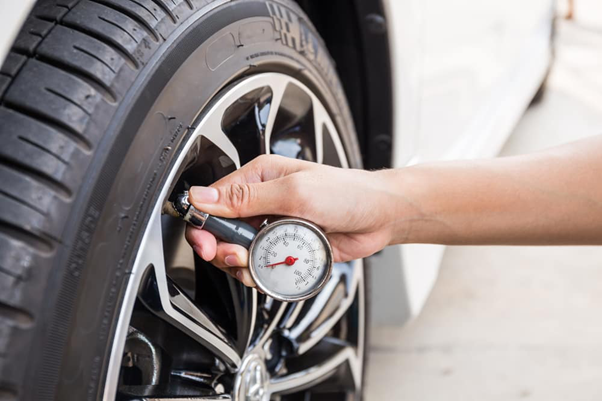Why You Should Never Let Your Car’s Tire Pressure Get Low

Did you know that underinflated tires cause three times more accidents than well-inflated ones? This statistic is from the National Highway Traffic Safety Administration (NHTSA). It underscores the importance of not taking chances with low tire pressure. In this guide, you will learn the risks associated with underinflated tires and insights into how to prevent this common issue.
Risks of Low Tire Pressure
Driving with under-inflated tires poses various hazards, making it a leading cause of tire failure. When your tires lack proper inflation, more rubber comes into contact with the road, generating increased friction and heat. The potential risks include:
Potential for Crashes
The undue stress on underinflated tires can lead to blowouts, resulting in sudden loss of control. Moreover, other drivers sharing the road may need to make abrupt maneuvers, such as sudden braking or swerving, to avoid accidents.
Reduced Fuel Efficiency
Underinflated tires force your vehicle to work harder, consuming more fuel. This can lead to a decrease in fuel efficiency, with a typical reduction of around three percent. Given the current high cost of gasoline, this decline can significantly impact your wallet.
Impaired Handling
Cars equipped with underinflated tires may struggle to maintain proper road grip, compromising your ability to navigate corners and increasing braking distances.
Heightened Costs
Low tire pressure not only increases your fuel expenditure but also accelerates tire wear. The heightened heat and friction resulting from underinflated tires can lead to premature tread wear, necessitating more frequent tire replacements.
How to Properly Check Your Tire Pressure
A common misconception is that tire inflation is only necessary when tires appear visibly flat. Unfortunately, low tire pressure often goes unnoticed through routine visual inspections. Even if your vehicle boasts a tire-pressure monitoring system, it typically alerts you only when tire deflation exceeds 25 percent, which may be too late.
Here's a step-by-step guide to ensuring your tires maintain safe pressure levels:
Refer to Manufacturer Recommendations
Locate the manufacturer's recommended tire pressure, typically found on a sticker on the driver's side door jamb or in your vehicle's owner's manual. Avoid relying on the PSI rating on the tire itself, as this denotes the maximum allowable pressure, not necessarily the optimal pressure for your specific car.
Acquire a Tire Pressure Gauge
Invest in a digital or pencil-style tire pressure gauge, and use it to measure the air pressure in your tires. Importantly, check tire pressure when the tires are cold, ideally in the morning or at least three hours after driving.
Inflate to Recommended Levels
Ensure your tires are inflated to the recommended pressure levels as per the manufacturer's specifications.
Experts advise a monthly tire pressure check as a proactive measure to maintain your safety on the road. This reduces the risks associated with underinflated tires and enhances your vehicle's performance, fuel efficiency, and overall safety. Remember, maintaining proper tire pressure is a small effort that yields significant benefits for both your wallet and your peace of mind on the road.